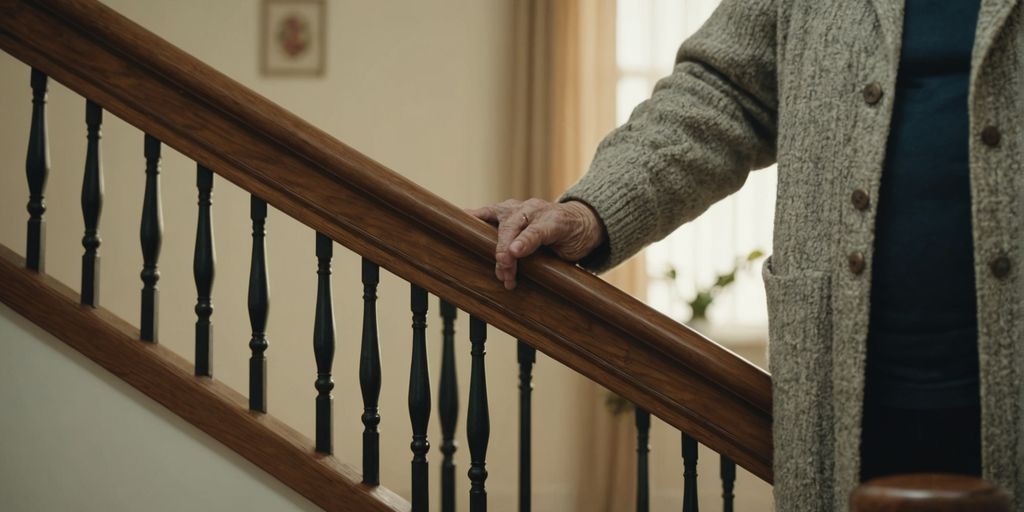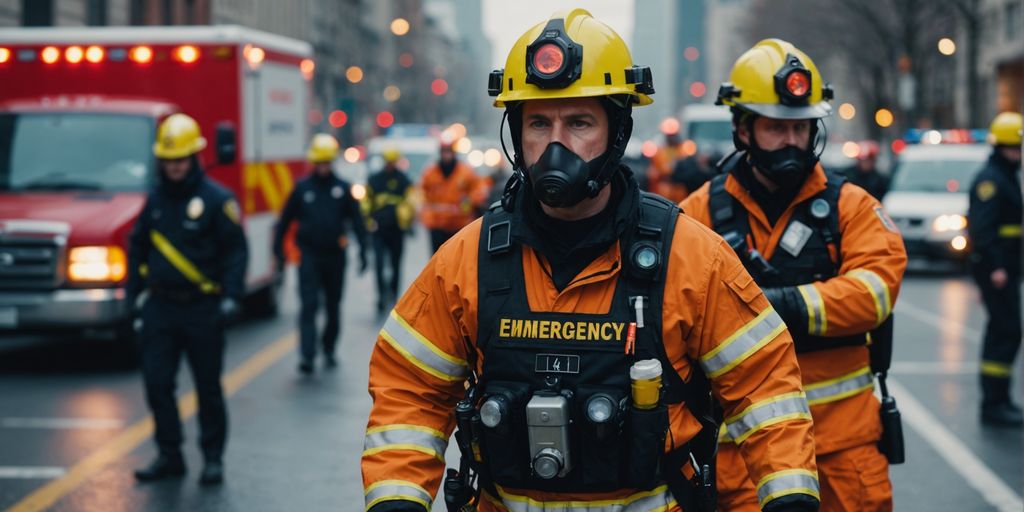Accidents like slips and falls can happen easily, but there are many ways to make your home safer. By keeping pathways clear, fixing uneven surfaces, and making sure your home is well-lit, you can help prevent these accidents. It’s also important to wear the right shoes, especially when conditions are wet or icy, and to be careful when moving around outside at night.
Key Takeaways
- Keep pathways clear of clutter to prevent tripping.
- Fix uneven surfaces to avoid falls.
- Ensure your home has good lighting inside and out.
- Wear appropriate shoes, especially in wet or icy conditions.
- Use handrails and grab bars for extra support.
Identifying Common Slip and Fall Hazards
The first step in preventing slip and fall incidents is to identify potential hazards. Regularly inspect your surroundings and look for tripping or slipping hazards, such as loose rugs, cluttered pathways, or wet floors. Trips, slips, and falls are avoidable incidents that can cause significant injuries and disrupt our daily lives. By taking proactive measures at home, we can minimize the risk of these events.
Improving Home Lighting
Good lighting is key to preventing slips and falls at home. Low lighting is a major cause of falls, so make sure there is enough lighting indoors and outdoors, especially near walkways and stairs. If your home is well-lit, it can help you see obstacles and avoid tripping over them.
Maintaining Clean and Dry Floors
Keeping floors clean and dry is essential to prevent slips and falls. Addressing spills immediately and maintaining a regular cleaning routine can significantly reduce the risk of accidents. Use non-slip mats in areas prone to wetness, such as the kitchen or bathroom, to enhance safety.
Regular Cleaning Routines
A consistent cleaning schedule helps keep floors free from debris and moisture. Make it a habit to sweep, mop, and vacuum regularly to ensure a safe environment.
Dealing with Spills Immediately
Clean up spills as soon as they happen. If you notice a leak from an appliance, manage it promptly to prevent the floor from becoming slippery. Quick action can prevent accidents and maintain a safe home.
Using Non-Slip Mats
Place non-slip mats in areas that are often wet, like bathrooms and kitchens. These mats provide extra grip and reduce the chances of slipping. Consider adding non-slip strips in showers or bathtubs for additional safety.
Choosing Appropriate Footwear
Selecting the right footwear is crucial for preventing slips and falls. Well-fitting and supportive shoes can greatly improve your stability and reduce the risk of accidents. Here are some tips for choosing the best footwear for different situations.
Securing Rugs and Mats
Rugs and mats can be dangerous if they aren’t properly secured. Use double-sided tape or non-slip backing to keep them in place. Sometimes, it’s best to remove unnecessary rugs or mats to avoid any risks. Make sure that all rugs and mats are flat and firmly attached to the floor to prevent accidents. If a rug or mat gets wet from spills or weather, replace it right away.
Utilizing Handrails and Grab Bars
Handrails and grab bars are essential safety features that provide stability and support, especially in areas like staircases and bathrooms. Installing these devices can significantly reduce the risk of falls and offer peace of mind for everyone in the home.
Repairing Uneven Surfaces
Uneven surfaces in your home can be a major hazard, leading to trips and falls. Identifying and fixing these issues promptly is crucial for maintaining a safe environment.
Promoting Safe Habits
Creating a safe home environment involves more than just physical changes; it also requires promoting and encouraging safe habits among all household members. By reducing clutter, moving obstructions, ensuring there is adequate lighting, and repairing uneven surfaces, you can create a safer environment for everyone in your household.
Outdoor Safety Measures
Navigating Wet or Icy Conditions
When dealing with wet or icy conditions, it’s crucial to take extra precautions. Slips, trips, and falls can be dangerous and costly. To avoid accidents, wear shoes with nonslip treads and consider using a rollator for stability in crowded areas. Always walk slowly and take small steps to maintain balance.
Maintaining Walkways and Driveways
Regular maintenance of walkways and driveways is essential for preventing accidents. Clear pathways of snow, wet leaves, or other debris. Repair cracks or chips in cement sidewalks and stairs promptly to avoid tripping hazards. Keeping these areas well-maintained can significantly reduce the risk of falls.
Outdoor Lighting for Safety
Adequate outdoor lighting is vital for safety. Install lights along pathways, driveways, and near entryways to ensure visibility at night. Motion-sensor lights can be particularly useful as they automatically illuminate when someone approaches, providing an added layer of security. Adequate lighting helps in identifying potential hazards and ensures safe navigation around your home.
Regular Home Inspections
Regular home inspections are crucial for maintaining a safe living environment. Routine inspections can help identify potential hazards before they cause accidents. By setting up a regular inspection schedule, you can ensure that both the interior and exterior areas of your home are safe.
Creating an Inspection Schedule
To keep your home safe, it’s important to create a consistent inspection schedule. This can be done weekly, monthly, or seasonally, depending on your needs. Regular inspections can help identify potential hazards before they cause accidents. Practices for fall prevention include implementing a daily cleaning routine and checking for any new hazards.
Areas to Focus On
When conducting home inspections, focus on areas that are prone to hazards. These include:
- Cluttered pathways
- Wet and slippery surfaces
- Loose rugs and mats
- Uneven flooring
By paying attention to these areas, you can reduce the risk of slips and falls.
Involving Family Members
Involving family members in regular home inspections can make the process more effective. Educate them about the importance of safety and encourage them to report any potential hazards they notice. This collective effort can help maintain a safer home environment for everyone.
Conclusion
Creating a safe home environment to prevent slips and falls is essential for everyone’s well-being. By keeping your home tidy, fixing uneven floors, and ensuring good lighting, you can reduce the risk of accidents. Remember to wear proper shoes, especially in bad weather, and use handrails when needed. Regularly check for hazards and make small changes to keep your home safe. A little effort can go a long way in preventing injuries and keeping your loved ones safe.


